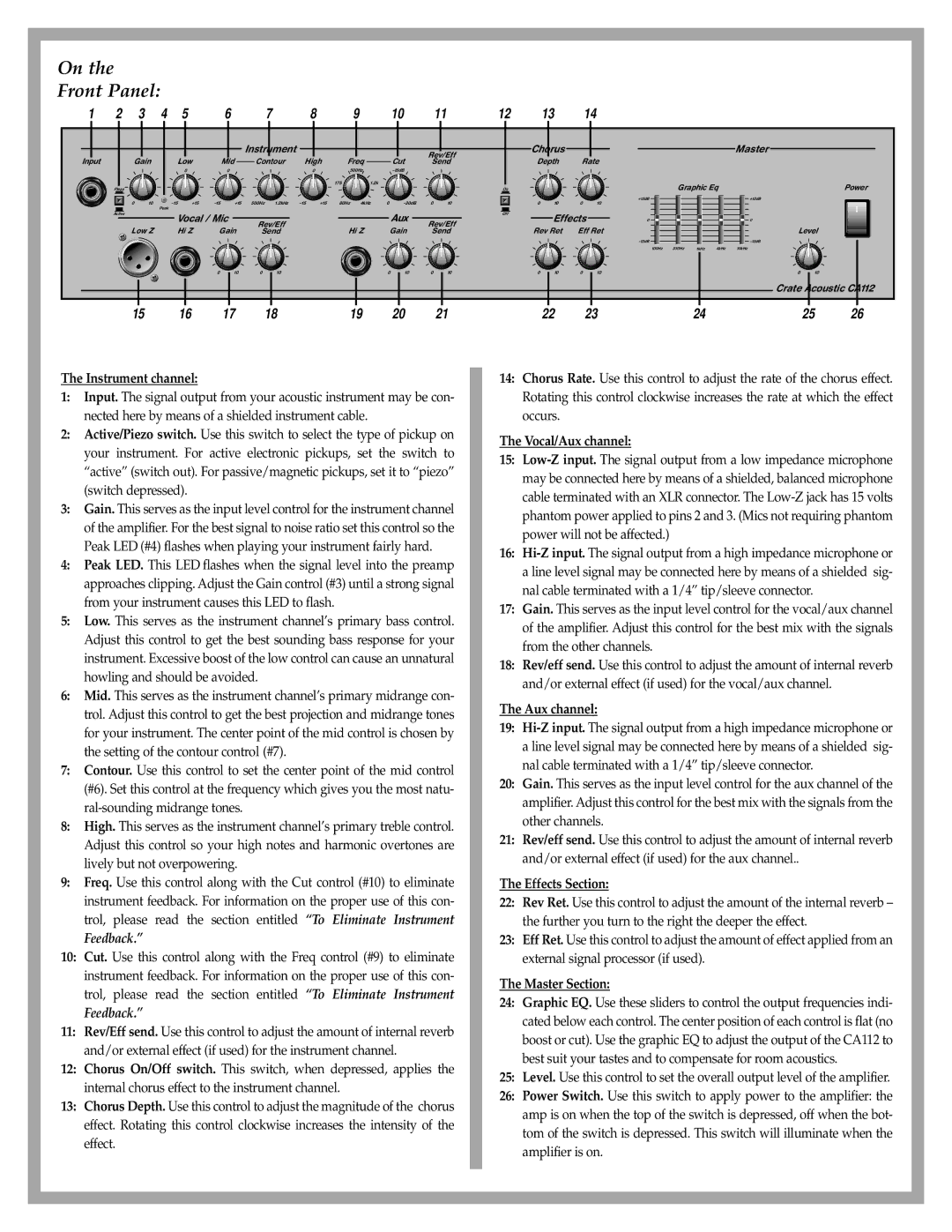CA112 specifications
The Crate Amplifiers CA112 is a dynamic and versatile combo amplifier designed for musicians seeking powerful sound and advanced features. Known for its exceptional performance and reliability, the CA112 is an ideal choice for guitarists playing in various genres, from rock to blues and beyond.One of the standout features of the CA112 is its 100-watt power output. This robust wattage ensures that the amplifier can deliver clear and loud tones, even in larger venues. The 12-inch speaker provides a rich, full-bodied sound that enhances the overall audio experience. Musicians will appreciate the amplifier's ability to project sound with depth and clarity, making it perfect for both practice sessions and live performances.
The CA112 is equipped with a three-channel system, allowing players to switch between clean, overdrive, and distortion tones seamlessly. This feature offers versatility, enabling guitarists to customize their sound to match their playing style. The integrated onboard effects, including reverb and delay, further complement the amplifier's tonal options, giving musicians the ability to create unique soundscapes.
Another significant characteristic of the CA112 is its built-in EQ controls. The three-band equalizer allows players to shape their tone by adjusting the bass, mid, and treble settings. This control gives musicians the flexibility to adapt their sound to different environments or personal preferences. The amplifier also includes a headphone output, making it convenient for practicing without disturbing others.
The construction of the CA112 is robust, designed to withstand the rigors of both practice and performance. The durable materials used in its design ensure longevity and reliability, while the lightweight build makes it easy to transport. The amplifier features stylish aesthetics, blending classic and modern elements, appealing to musicians who value both functionality and appearance.
In summary, the Crate Amplifiers CA112 stands out as a powerful and versatile combo amplifier suitable for guitarists of all levels. With its impressive power output, multi-channel selection, onboard effects, and customizable EQ controls, it offers plenty of features for musicians to explore. The combination of robust construction and stylish design adds to its appeal, making the CA112 a worthy investment for any musician looking to elevate their sound.

